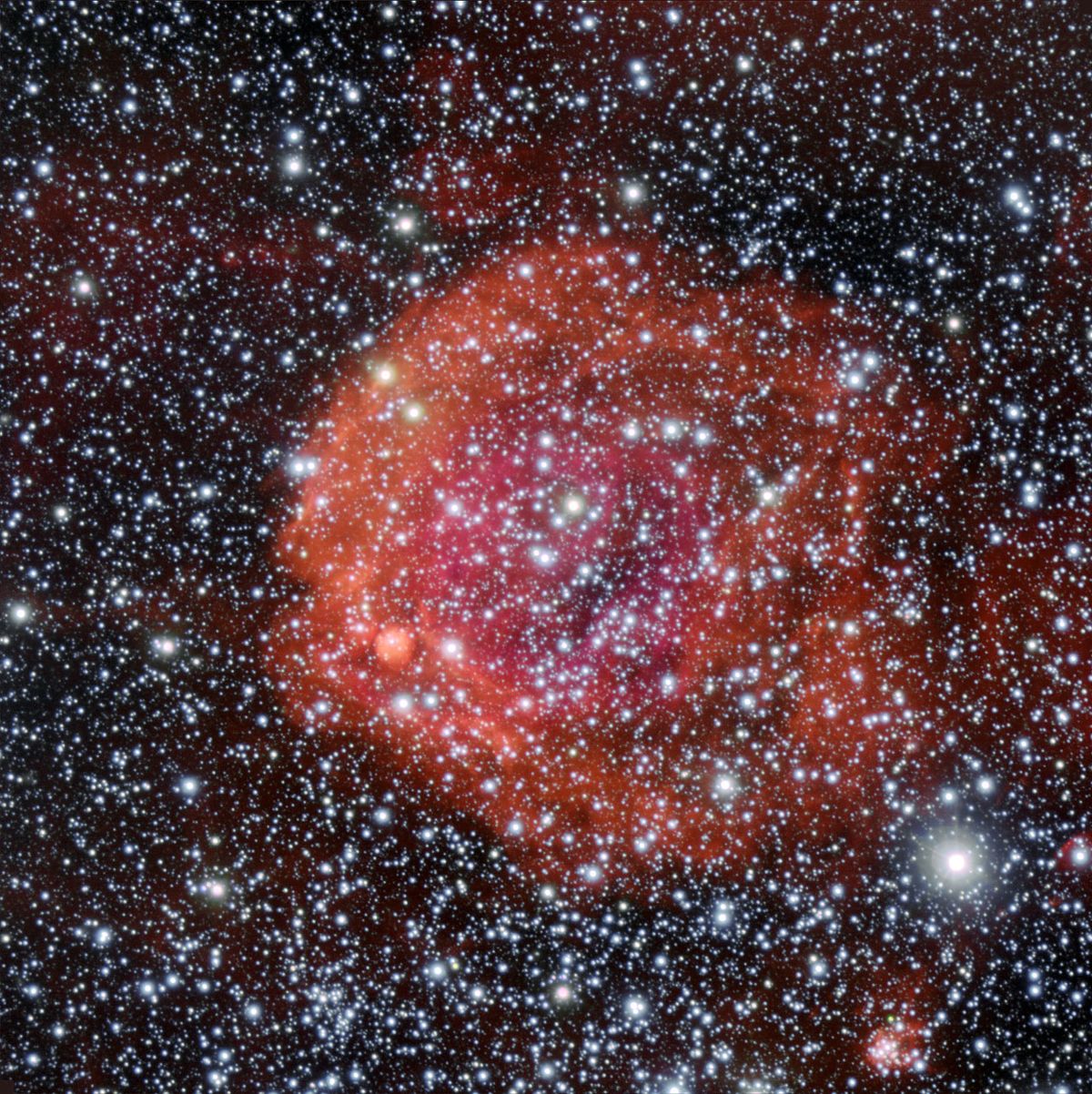Cosmic Rose Blooms in Star Cluster Photo

A bright star cluster surrounded by iridescent red gas looks like a blooming cosmic rose in a new photo from the European Southern Observatory's Very Large Telescope.
The photo depicts the star cluster NGC 371, a stellar nursery in our neighboring galaxy the Small Magellanic Cloud, a dwarf galaxy about 200 000 light-years from Earth. Such regions of ionized hydrogen — known as HII regions — are sites of recent star birth. [See the red rose star cluster photo]
NGC 371 is an open cluster surrounded by a nebula. The stars in open clusters all originate from the same diffuse HII region, and over time the majority of the hydrogen is used up by star formation, leaving behind a shell of hydrogen such as the one in this image, along with a cluster of hot young stars.
This cluster is of particular interest to astronomers due to the unexpectedly large number of variable stars it contains. These are stars that change in brightness over time. Variable stars play a pivotal role in astronomy: Some types are invaluable for determining distances to far-off galaxies and the age of the universe. [More Photos by the Very Large Telescope]
The Small Magellanic Cloud contains stars at all stages of their evolution, from the super-bright young stars found in the NGC 371 cluster to the supernova remnants of long-dead stars.
The energetic young stars emit copious amounts of ultraviolet radiation, causing surrounding gas, such as leftover hydrogen from the stars' parent nebula, to light up with a colorful glow that extends for hundreds of light-years in every direction.
This new image was created using the FORS1 instrument on the Very Large Telescope at the Paranal Observatory in Chile's Atacama desert.
Sign up for the Live Science daily newsletter now
Get the world’s most fascinating discoveries delivered straight to your inbox.
Follow SPACE.com for the latest in space science and exploration news on Twitter @Spacedotcom and on Facebook.
This story was provided by SPACE.com, a sister site to LiveScience.













